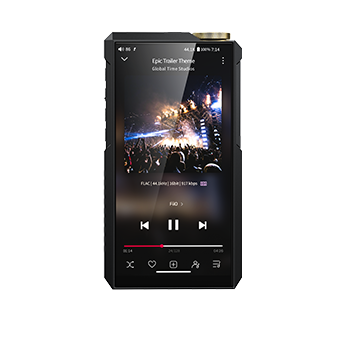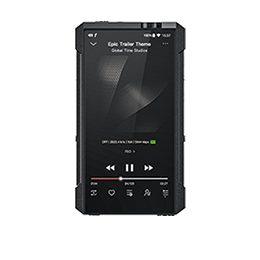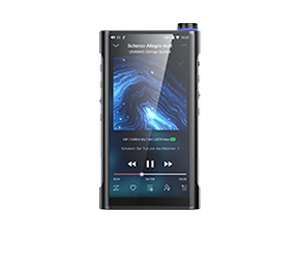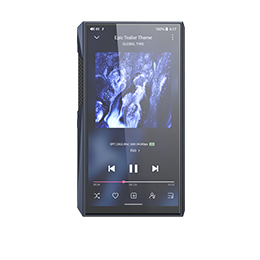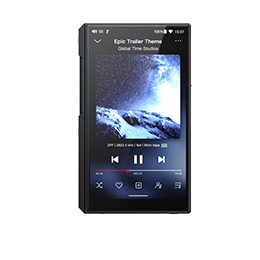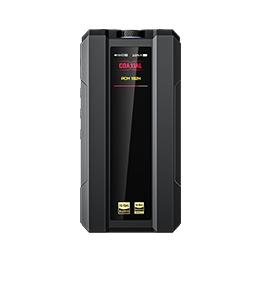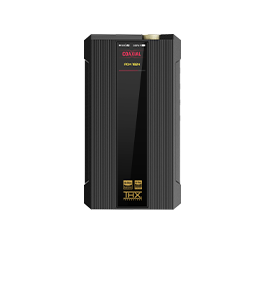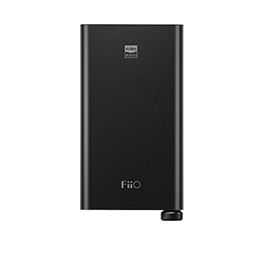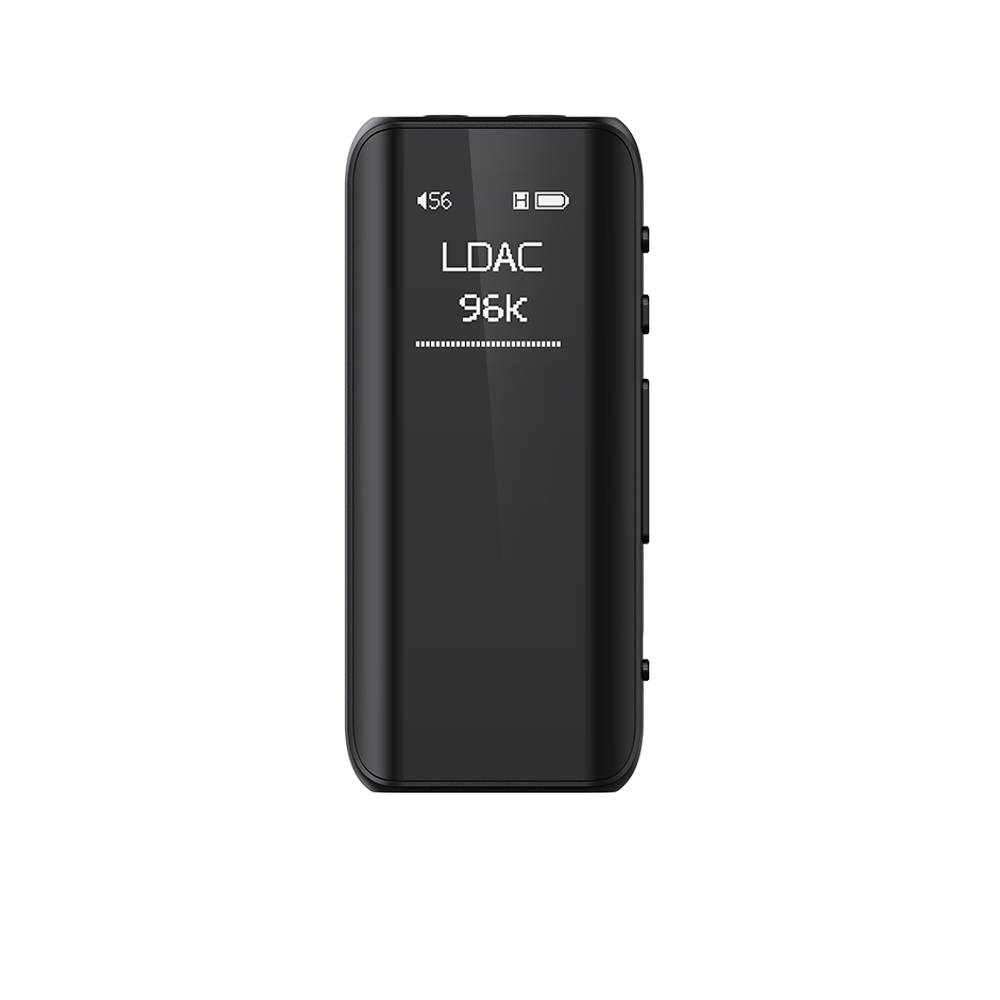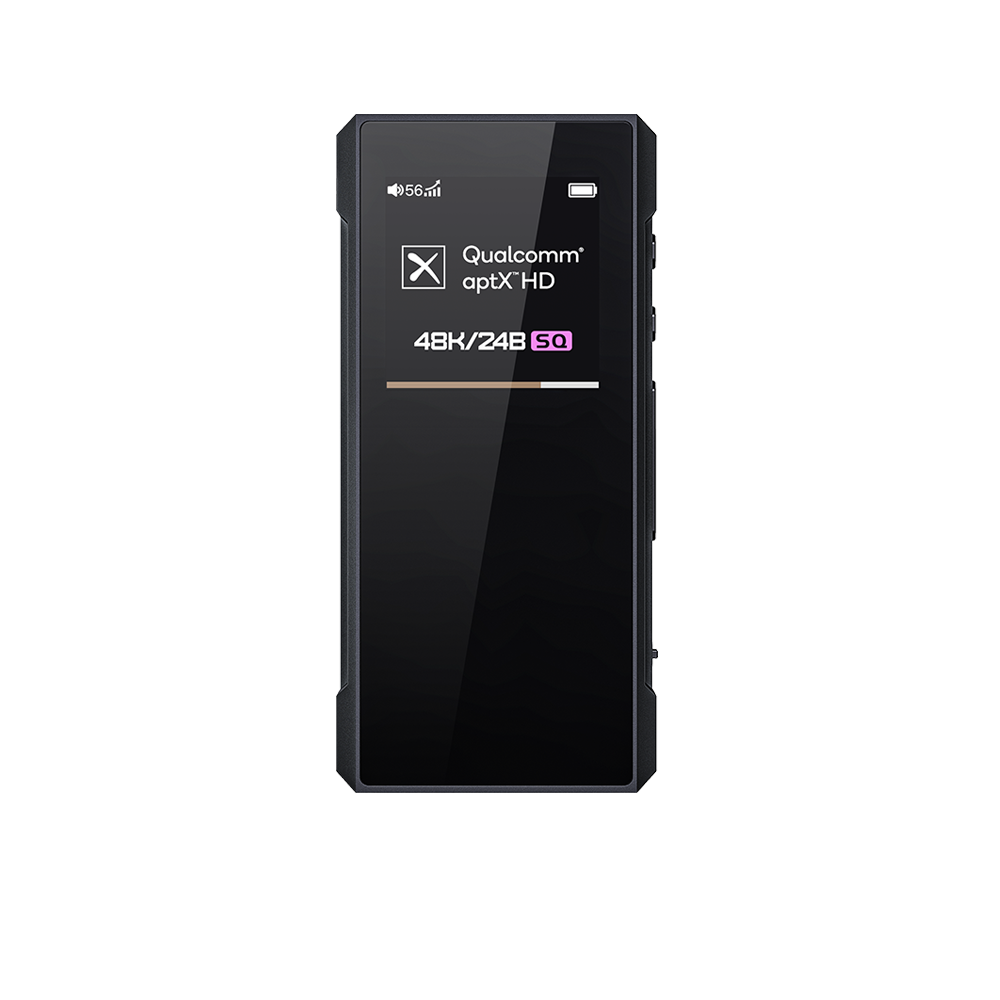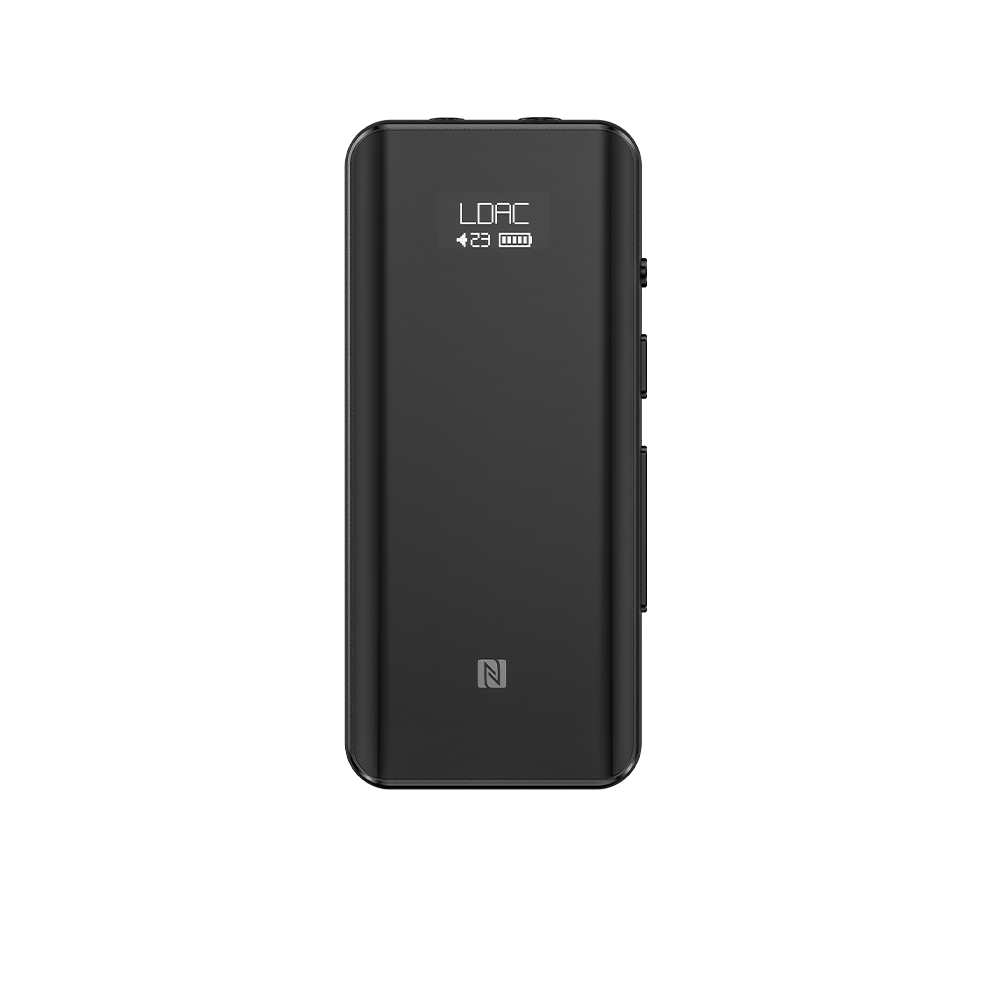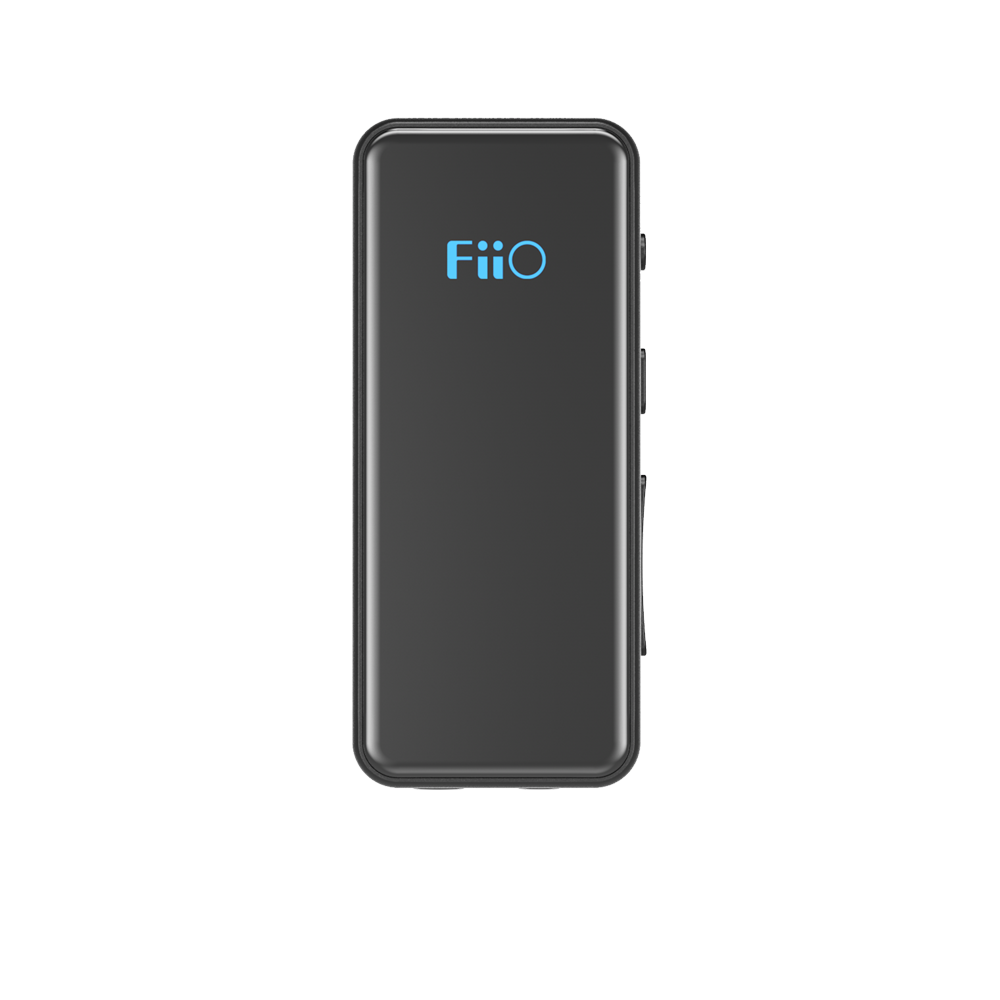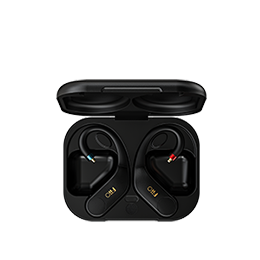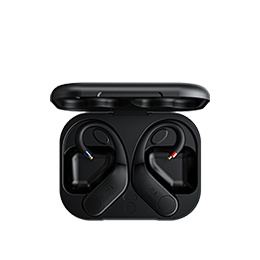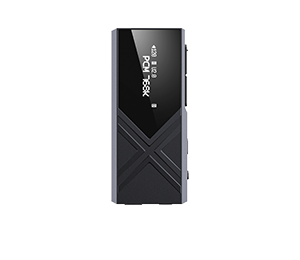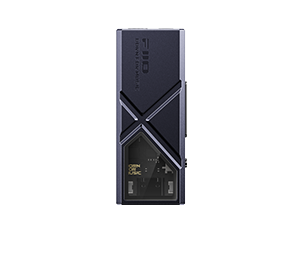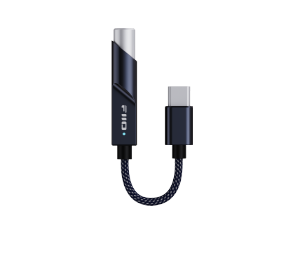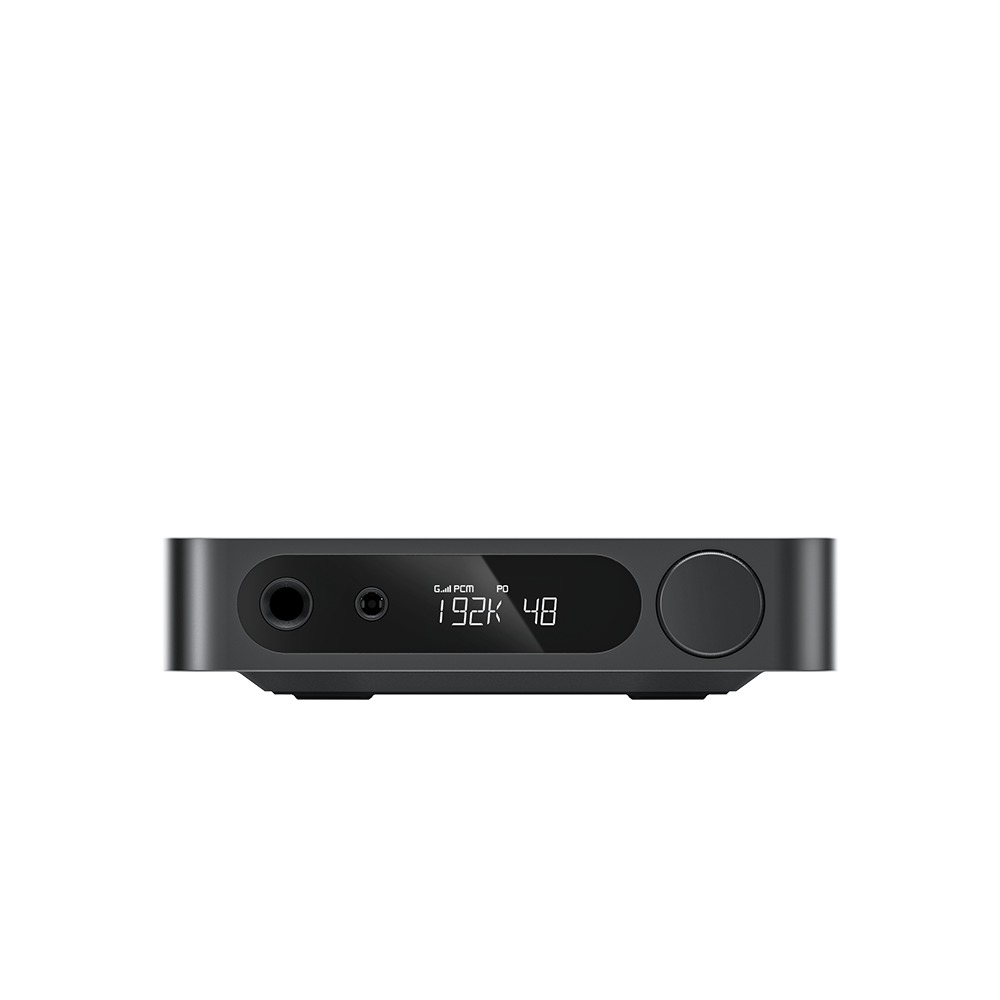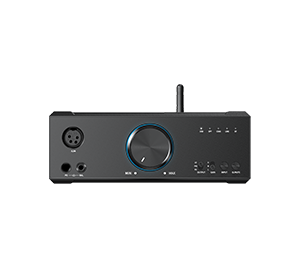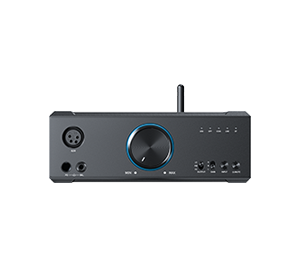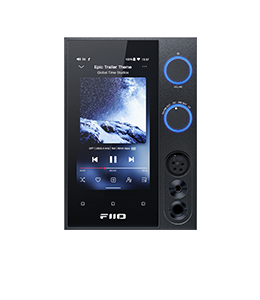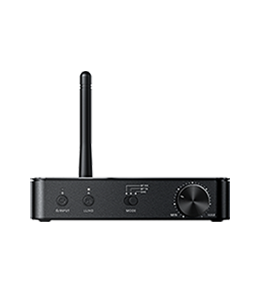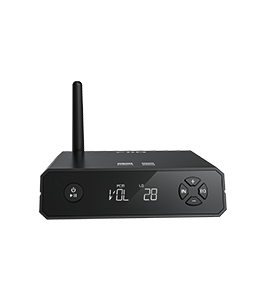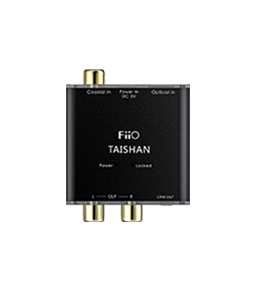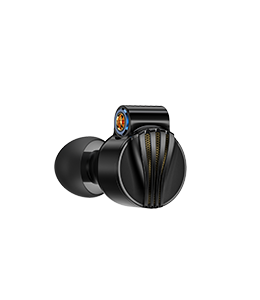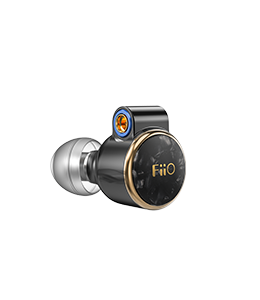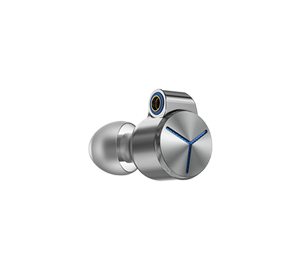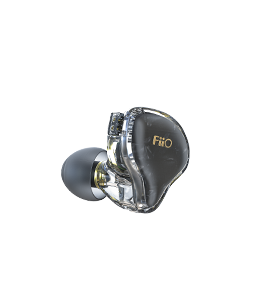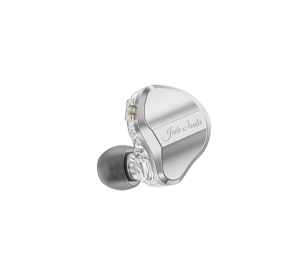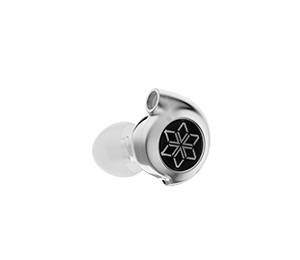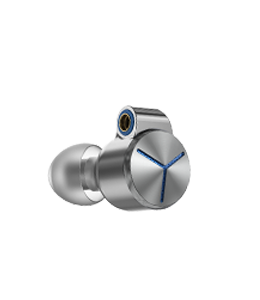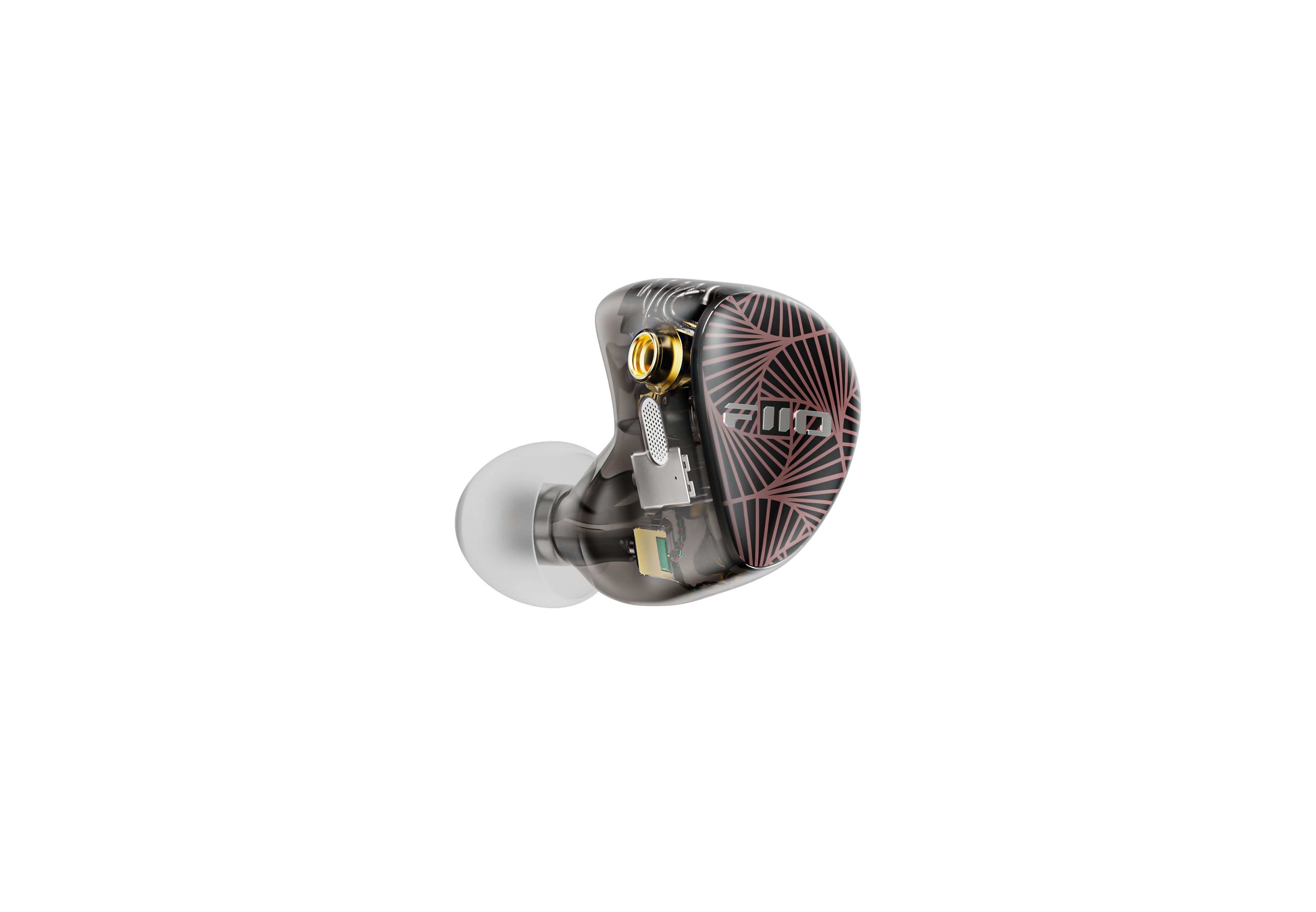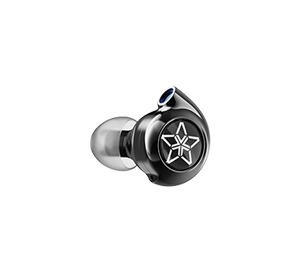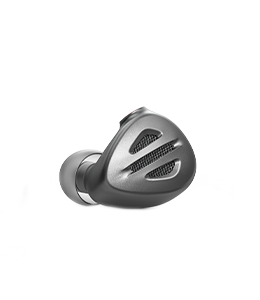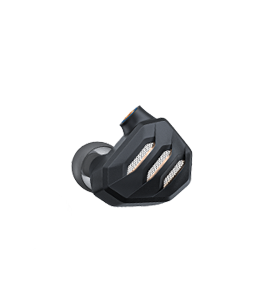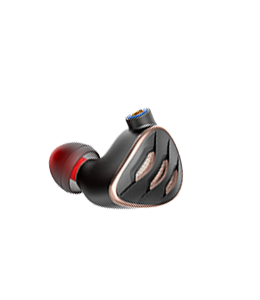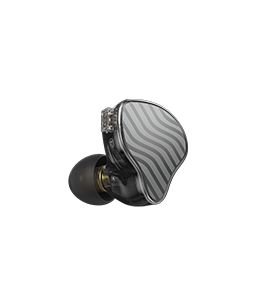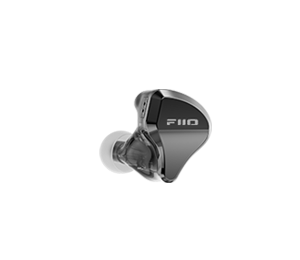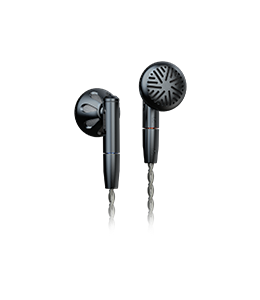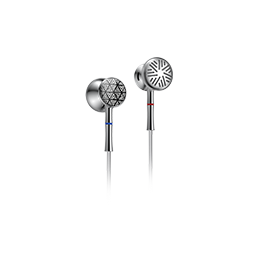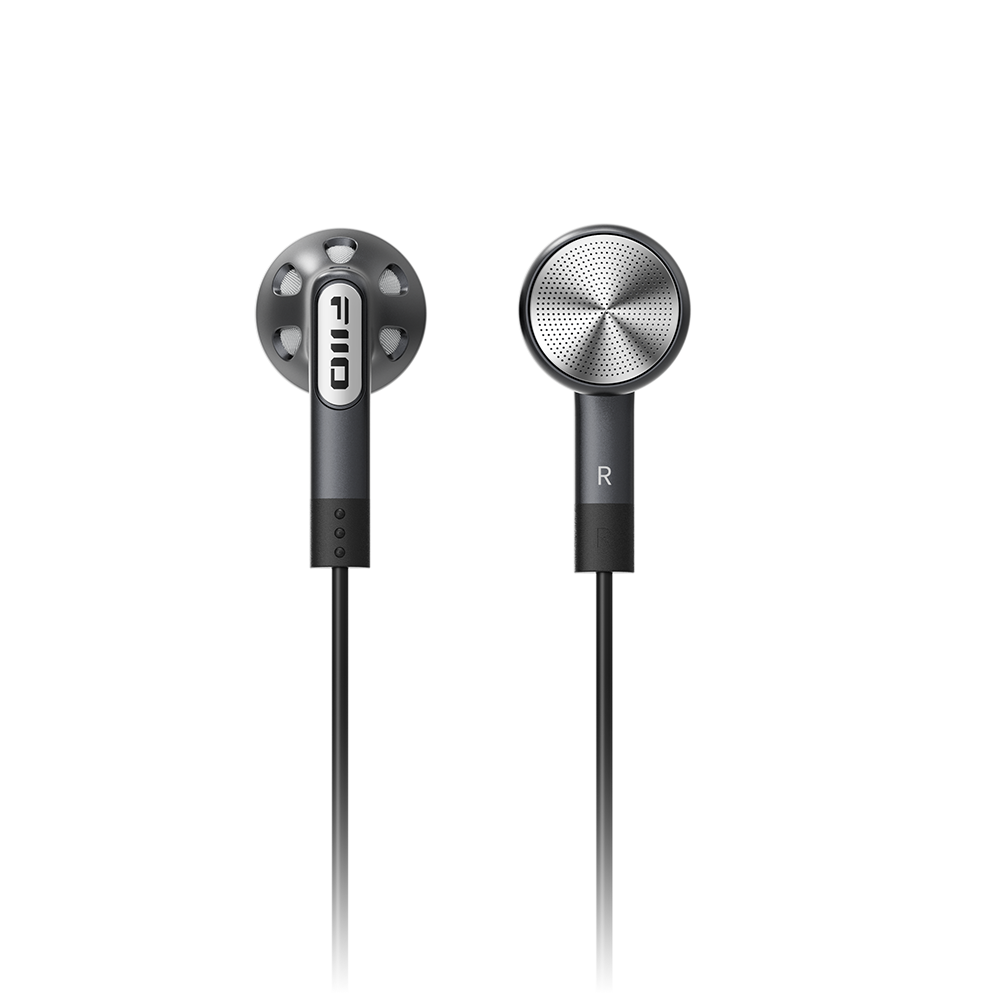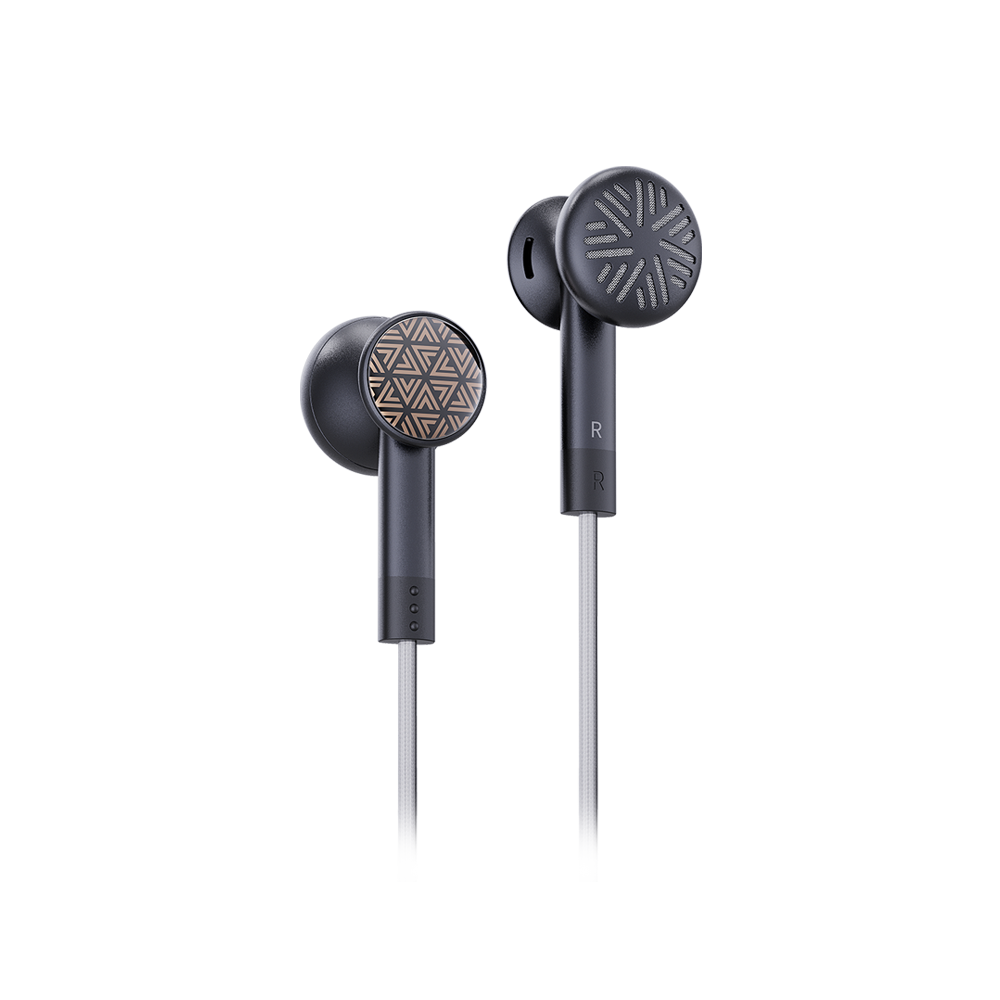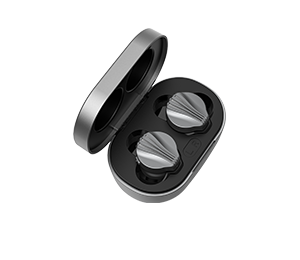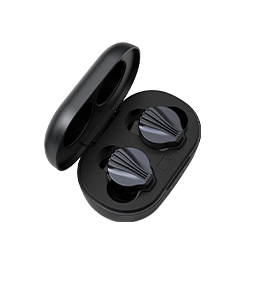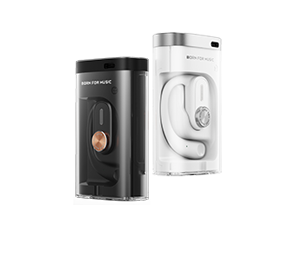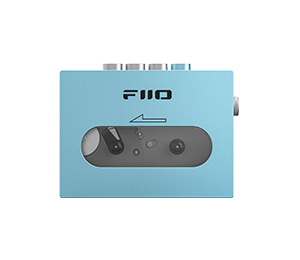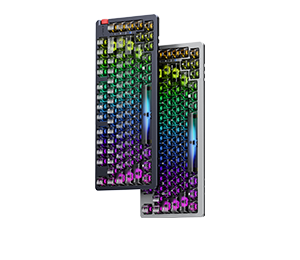FiiO A5 – Effortless power, exemplary sound
 |
For larger (1200x800) images, simply click any photo
INTRODUCTION
Ahhh – the portable amplifier – one of the audio enthusiast's more misunderstood tools / assets. For the beginner, there is the promise of the fabled increase in clarity, details, sound-stage! Once you've been around the traps a while, you learn that careful volume matching takes a lot of these perceived gains away, and you learn that what you thought you were hearing was more than likely the amplified headphone playing slightly louder.
So with today's headphones (especially for portable listening) becoming easier to drive, and people wanting less bulk with their sources (and indeed the sources becoming more powerful), is there any real use for a portable amplifier any more?
I'll try to answer some of these questions from an objective point of view, while walking you through a look at the FiiO A5 amplifier. We'll look at how it performs, and why you might consider one – and what gains you can expect.
ABOUT FIIO
By now, most Head-Fi members should know about the FiiO Electronics Company. If you don’t, here’s a very short summary.
FiiO was first founded in 2007. Their first offerings were some extremely low cost portable amplifiers – which were sometimes critiqued by some seasoned Head-Fiers as being low budget “toys”. But FiiO has spent a lot of time with the community here, and continued to listen to their potential buyers, adopt our ideas, and grow their product range. Today, their range includes DAPs, portable amps, portable dac/amps, desktop dac/amps, earphones, cables and other accessories.
FiiO’s products have followed a very simple formula since 2007 – affordable, stylish, well built, functional, measuring well, and most importantly sounding good.
DISCLAIMER
The FiiO A5 amplifier was provided to me gratis as a review sample. I have made it clear to FiiO in the past that I did regard any product they sent me as their sole property and available for return any time at their request. I have purchased quite a few FiiO DAPs and amps over the last 5 years. Recently FiiO informed me that everything they send to me now is a review sample and they will not accept further payment. So I acknowledge now that the A5 I have is supplied and gifted completely free of any charge or obligation. I thank FiiO for their generosity. As a side note – I would have gladly purchased the A5 from FiiO – read on to find out why.
PREAMBLE - 'ABOUT ME'.
(This is to give any readers a baseline for interpreting the review).
For the actual listening part of this review I used the FiiO A5 mainly with my X5ii DAP. Observations about the A5 are based on the last four weeks use. This is a purely subjective review - my gear, my ears, and my experience. Please take it all with a grain of salt - especially if it does not match your own experience.
FURTHER NOTES
Volume matching was done with a calibrated SPL meter and test tones (1 kHz) when required for comparison.
In the past I have tried to measure distortion using a relatively cheap Startech USB sound-card (which measures pretty well – 0.012% THD and 0.024% THD+ using loop-back). I have stopped trying to do this simply because FiiO's measurements (and I do trust them) are lower than my sound-card is capable of measuring.
Frequency response is measured with the same sound-card and a licensed copy of the ARTA measuring suite. The sound-card has a calibration adjustment applied – so that it measures dead flat from 20 Hz to 20 kHz.
WHAT I LOOK FOR (NOW) IN A PORTABLE AMP
I thought I’d list (before I start with the review) what I would now look for in a portable amp. This is useful to remember when looking at my reasoning for scoring later in the review.
Genuine portability
Good battery life
Clean, neutral signature
Easy to use
Low output impedance
Reasonable output power – should be able to drive IEMs and earphones up to 300 ohms
Good gain control
Value for money
PORTABLE AMPS I’VE OWNED OR CURRENTLY OWN
GoVibe Porta Tube, Headstage Arrow 12HE 4G, Beyerdynamic A200p, FiiO E7, E11, E11K (A3), E17K, Q1, VE Runabout. IMS Hybrid Valve Amp
THE REVIEW
PACKAGING AND ACCESSORIES
 |  |  |
Front of the retail box | Rear of the retail box | Inner box |
The A5 arrived in FiiO’s newer style retail packaging – a black outer sleeve with a white main panel and photo of the A5 on the front. The front panel also bears Sony's “Hi-Res Audio” badge. On the rear is a list of features and QR codes. The outer box/sleeve measures 108 x 166 x 52mm.
 |  |  |
First glimpse of the A5 | Inner packaging / location of accessories | Full package contents |
Opening the outer retail sleeve reveals a matt black inner box and lid. This contains a foam cut-out (securely holding the A5), and a secondary envelope and also compartment for the accessories. The accessories include:
4 FiiO brand rubber stacking bands
1 x 3.5-3.5 mm micro cable
A USB to mini-USB recharging cable
2 silicone stacking pads
1 x cloth carry case/pouch
Warranty and quick start guide
 |  |  |
Charging cable and interconnect | Stacking accessories (pads and bands) | Included soft case |
The entire package is very practical, covering everything you initially need for the A5. Materials are all good quality. I'd like to make mention of the short interconnect which is ideal for a stacking situation – and also the silicone stacking pads which are ideal for protecting metal surfaces without adding bulk.
TECHNICAL SPECIFICATIONS
The table below lists most of the relevant specifications for the A5. I have also included specs for the original E12 and E12A as a comparison
| FiiO A5 | FiiO E12A | FiiO E12 | |
| Price | ~ USD 125.00-130.00 | ~ USD 125.00-130.00 | ~ USD 125.00-130.00 |
| Dimensions | 124 x 65.5 x 14.5mm | 124 x 65.5 x 14.5mm | 124 x 65.5 x 14.5mm |
| Weight | 168g | 166g | 159g |
| Amplifier chipset | Muses02 + LME49600 | Muses02 + LME49600 | LME49710 & LME49600 |
| Output power (16 ohm) | 420 mW (THD+N <1%) | 600 mW (THD+N <1%) | |
| Output power (32 ohm) | 800mW (THD+N <1%) | 880mW (THD+N <1%) | |
| Output power (300 ohm) | 150 mW (THD+N <1%) | 190 mW (THD+N <1%) | |
| SNR | ≥115dB (A-weighted) | ≥115dB (A-weighted) | ≥110dB (A-weighted) |
| Output impedance | <0.3 Ω | <0.3 Ω | <0.3 Ω |
| Crosstalk | ≥ 75 dB (1 kHz) | ≥ 85 dB (1 kHz) | ≥ 65 dB (1 kHz) |
| THD+N | < 0.002% (1 kHz) | < 0.003% (1 kHz) | < 0.003% (1 kHz) |
| Peak output voltage | 14.96 Vp-p | 10.3 Vp-p | 15 Vp-p |
| Max output current | 250 mA | >113.3 mA | >170 mA |
| Battery size | 880 mAh | 1500 mAh | 880 mAh |
| Battery life / Chg time | ≥13 h // <3 h | ≥20 h // <3 h | ≥12 h // <2 h |
You'll note a mix in the above specs of the original E12's power, and the E12A's finesse. According to FiiO, they've been able to lower THD by almost 1/3 of the original very quiet E12A, whilst delivering almost the same power as the original E12. So the A5 has a total gain close the the E12, but better channel balance, lower noise floor, and overall a purer, cleaner sound.
BUILD / DESIGN
External
The A5 is rectangular shaped with bevelled edges all around, and dimensions of 124 x 65.5 x 14.5mm. The main body is a solid machined block of aluminium, with a top and bottom plate to hold the internals. The finish on the aluminium is a very fine sand blast followed by anodising, and the resultant finish is very clean and smooth.
 |  |  |
Top of the A5 | Bottom of the A5 | USB port and bass boost |
At the top are the 3.5mm line-in and headphone out sockets, and FiiO has elected to replace the usual copper socket rings with stainless steel – for better durability, and an added bonus is that it is more aesthetically pleasing. Next to this is the high/low gain switch and then the Alps potentiometer – which has also had a makeover to be more stylish and eye-catching. The action on the pot is very smooth, and I've noticed no channel imbalance even at very low levels.
 |  |  |
Line in, headphone out, gain and volume pot | Vol pot is excellent & casine is nicely rounded | Charging and in-use LEDs |
On the front face next to the sockets are two small LEDs. One is lit when the A5 is operating, and the second one is lit when charging. The nice thing about the charging light is that it actually also shows what speed its charging at. The faster it's blinking – the quicker it is charging. On the opposite side is a small reset hole. At the side is the bass boost switch (+5dB at x) and micro USB charging port. I'll show the effects of both the gain and bass boost (and my thoughts on both) later in the review.
 |  |  |
Size comparison - X5ii | Size comparison - X7 | Size comparison L&P L3 |
Everything about the A5 is extremely well made, and probably the only critique I would have is a gentle one. The low profile slide switch for the bass boost is (IMO) better implemented than the more prominent “flick” switch for the gain. It just seems a little out of place having two styles of switch – and I'd prefer the bass boost style (consistency and less likely to mistakenly toggle)
Internal
I was originally going to open the A5 up and give you a look at the internals – but whilst I could remove the bottom plate, I had no way of sliding the internals out of the shell without knowing the layout. Fortunately FiiO included a photo on their website – so I've used this to illustrate the layout.
Half of the internal space is taken up with the 880 mAh 3S battery, and this uses some pretty smart technology. It will automatically detect the charging rate of your power supply (be it standard USB from a PC, wall-wart, or storage cell), and adjust the rate accordingly for maximum efficiency. I have a battery pack with a 5V 2.1a output, and from flat, the A5 was charged fully in well under 3 hours – not bad considering the up to 13 hours available life.
 |  |
FiiO's internal photos | FiiO's internal photos |
At the heart of the A5's amplification circuit is the MUSES02 + LME49600 op-amp combination which was so successful with the E12A. Other changes FiiO has made include the application of high precision metal film resistors, and the removal of coupling capacitors in the power supply. So what does this mean – in comparison to the E12A? Well for a start FiiO have been able to increase the voltage output (peak is now ~15 Vp-p up from 10.3), and double the max current output (250 mA up from 113 mA), but most importantly they have been able to achieve this extra power with much lower noise output – effectively returning twice as much power with the same or lower noise readings than the original E12A. This is quite a feat.
GAIN & BOOST
The A5 boasts two toggle features – the first being a high and low gain switch, and the second being a bass boost. The gain switch does exactly what it says, and lifts the volume by 14 dB under loop-back (no load). The gain is extremely even across the board – and is only adding true volume gain. As I'll allude to shortly – because the A5 is already extremely powerful (without the gain) – I do think FiiO maybe missed out on an opportunity here. If they actually had a negative gain option, it would be better for more sensitive IEMs. The issue at the moment is there is just too much volume available for some IEMs, and unless you are driving extremely demanding headphones, the high gain option isn't really going to be used.
 |  |
Gain and bass boost - measured | Closer look at the bass boost |
The A5 also comes with a bass boost, and the implementation very much reminds me of the bass boost from their E17K. Instead of targeting a narrow band boost, it actually starts a very shallow rise from around 2 kHz and peaks at just under 7 dB around 60 kHz. So this is essentially a sub-bass boost with some effect in the mid-bass, but majority in sub-bass. Engaging it with a reference headphone like the HD600 really helps give some punch and lower end warmth, and with the Beyer T1 it is amazing how it really transforms the overall signature (if this was the base signature for the T1 with bass boost on, I possibly would not have bought the HD800S – yes its that good).
BATTERY LIFE
FiiO rates the play time on a full charge at around 13 hours, and recharge time at around 2.5-4 hours (depending on your charger). I've tested it a few times so far, and that range of numbers seems to be pretty accurate, with playtime depending on the load you're driving at the time. What I really like about the A5 though – and I'm considering leaving it permanently attached to the X5ii – is that using it with the X3ii or X5ii line-out extends battery life on both FiiOs by at least 5 or so hours. So if I was going to be on a long haul, or somewhere I simply needed extra life with my DAP, the FiiO A5 would definitely be coming with me.
REAL WORLD PERFORMANCE & SONICS (SUBJECTIVE)
As usual I’m going to preface this section with my thoughts on reviewing amplifiers. You'll note I don't break this section into bass, mids, treble, and I don't really discuss things like sound-stage or imaging. As you've seen from the graphs, the A5 is extremely linear – it is measuring beautifully flat from 20Hz – 20 kHz. The very slight drop in the sub-bass (about 0.2 dB) at 20 Hz is of course completely inaudible, and if anything I suspect it is my sound-card. So how could I comment on parts of the spectrum if they aren't changed. What you'll hear with the A5 – is simply the signature of the source and the headphones you are using.
Likewise with imaging and sound-stage – there is no cross-feed, so no affect – its just not valid to discuss it as a topic.
What I will say is that the A5 is one of the most linear amplifiers I've heard – a true wire with gain – adding nothing, taking away nothing. Couple that with extremely low noise (the background is beautifully black), and you simply get the music. If you've paired a good source and you're using a good recording, the music will shine. The A5 just gets out of the way. It is what every amp should be.
So how about performance with some real headphones?
Full sized
May as well start with the 600 ohm Beyerdynamic T1. The T1 isn't really a hard to load to drive despite its 600ohm impedance – and the A5 handles it easily. The pot on the A5 goes from about 9 o'clock through to 7 o'clock (it's unmarked – so I have to use this descriptor). On low gain at around 1pm (so about 40% of the pot), I'm at my normal listening level (around 65-75 dB). Pushing the pot to 3 o'clock, and suddenly we're at 80 dB+ and its really too loud. So in real world terms the A5 has oodles of power on tap.
 |  |  |
Great with the T1 (+ bass boost) | And the HD800S with no boost | And very good with the HD600 too |
But how does the T1 perform? It actually performs pretty well – maybe not quite the amount of bottom end that is exhibited when used with a tube amp like the VE Enterprise, but the T1 sounds truly great. Full bodied, great transients, great tonality. The one thing I can do with the A5 I can't with the Enterprise though is engage that bass boost – and with it the T1 really does hum.
The other two headphones I checked out – again going back and forth between the X5ii + A5 vs the iFi iDSD and Enterprise (same tracks and volume matched) – were Sennheisers HD600 and HD800S. Again (like the T1), the A5 had no issue driving either headphone, and essentially got out of the way – and became a window to the music. With higher impedance headphones the A5 simply shines.
IEMs
I thought in advance that this could be a very different situation – and likely to be one of too much power on tap. I started with the MEE P1 which definitely need amping (50 ohm impedance and 96 dB sensitivity), and at just under 12 o'clock on the pot, the P1 was perfectly driven. Again the A5 just gets out of the way – and there is no doubt I'm simply hearing the P1's default signature – and its really good.
So how about something more sensitive? Time to try the Earsonics ES3 (32 ohm, 116 dB sensitivity). This time I have the pot right down to about 11 o'clock – and once again I'm pleasantly surprised by how really good the A5 sounds with this IEM (or more particularly how it “doesn't sound”). The background is pitch black, and the ES3 simply shines.
 |  |  |
Driving the MEE P1 | And the Earsonics ES3 | My 64Audio U6 (ADEL) with 75 ohm adaptor |
I had the Campfire Andromeda when the A5 arrived (it was due to be returned), so I took the opportunity to try it as well. I was more concerned about hiss and noise floor. Naturally I couldn't hear any – the one advantage of having tinnitus I guess – it masks hiss. But I once again had my daughter Emma (who has amazing 13yo hearing – and listens so quiet that I can barely hear her perfect volume level) to try and see what she could hear. We used the Andromeda with nothing playing and simply raised the volume on the pot. Hiss was faintly audible to her at around 1/3 on the pot, but below that it was dead quiet (low gain). As you've seen above, at 1/3 volume with the Andromeda you'd be blowing your ears to bits with real music (hiss would be the least of your problems) – so the A5 is very, very quiet.
The only issue with the Andromeda was that for my ideal volume – I was very close to the bottom of the pot – and that is the one area I think FiiO could have improved. For the vast majority of IEMs and definitely for most headphones, the A5 is ideal – but for really sensitive IEMs – it may just be a little too much power, and not enough room at the bottom end of the pot. An option for a negative gain would be really handy
Special note (my U6):
So what about my favourite IEM – 64Audio's U6 with ADEL module? Anyone who's followed my journey with 64Audio's U6 (and U10) will know that IMO both simply shine with a higher impedance output – they were initially tuned by 64Audio with higher impedance stagewireless output packs in mind. So with the U6 I often use a 75 ohm buffer impedance jack. This of course makes the A5 a brilliant partner. I can listen around 60-65 dB (I always listen lower with the ADEL module), and on the pot I'm at around 12 o'clock. Another great pairing.
Low noise
I thought I'd finish this section with a couple of graphs – this time trying to measure any distortion. My USB sound-card measures (on loop-back) THD at around 0.011%-0.013% and THD+N at 0.019%-0.020% at pretty much -100 dB if I measure it on loop-back. Its simply not quiet enough to really measure these amps – but its an interesting exercise to perform. So I ran the A5, measuring at 1 kHz and using two different signal – one at 300 Hz and the other at 2 kHz. Both times I was simply recording the USB card's output – the A5 was too quiet to even show up. And the sound-card’s distortion at it's current measurement is beyond real-world audible limits. So I can confirm, the A5 is extremely quiet – even when being pushed at close to full volume.
 |  |
300 Hz tone - THD measurements | 2 kHz tone - THD measurements |
FiiO states measured THD+N at 0.002% on their lab equipment, and I have no reason at all to doubt this figure. The floor is definitely not audible at normal listening levels.
COMPARISONS (SUBJECTIVE)
This was a difficult one – how do you compare amp only, when I don't have a lot of portable amps – either in this power bracket, or even in this price bracket?
Because I don’t have a lot of other straight amplifiers at my disposal, I simply used what I had available. So in the end I chose to compare with FiiO's own E17K, the IMS Portable Valve Amp, and my iDSD (even though all 3 are DAC/amp combos). For the comparison I used my X5ii as source, and merely went line-out in each case to the individual amps. I used the X5ii as it's been the main source I've used throughout the review.
 |  |  |
A5 vs E17K | A5 vs IMS HVA | A5 vs iFi iDSD |



